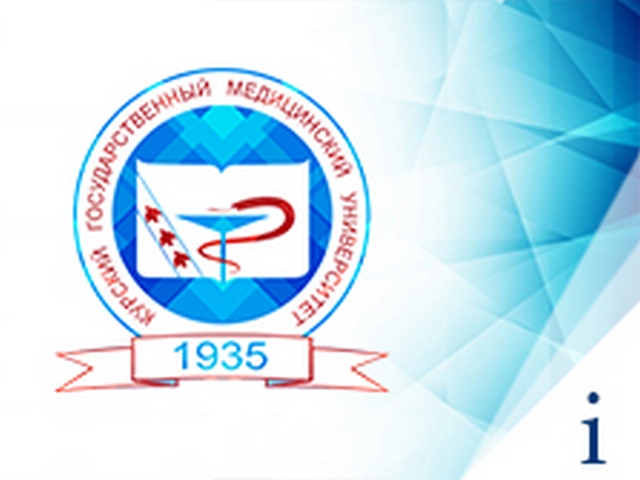
Во всем мире сердечно-сосудистые заболевания из года в год остаются ведущей причиной смертности населения. Россия не является исключением из этой, к сожалению, неблагоприятной статистики, а среди стран Европы является регионом с очень высоким риском развития сердечно-сосудистых заболеваний. Такое положение дел, тем не менее, может измениться, если как можно большее число жителей нашей страны будет осведомлено о проблеме сердечно-сосудистых заболеваний.
Медицина делает всё от неё зависящее для снижения заболеваемости, смертности, улучшения качества жизни пациентов, но этого недостаточно. Врач не может сопровождать пациента в каждую минуту его жизни, поэтому каждый человек, обеспокоенный своим здоровьем, и даже тот, кто не задумывается о нем вообще, должен знать о профилактике, то есть, о том, как можно предупредить развитие заболеваний. Но даже тогда, когда человек уже страдает каким-либо недугом, можно сделать многое для того, чтобы состояние не ухудшалось, чтобы, несмотря на уже имеющуюся болезнь, жить было легче.
Для того, чтобы восполнить пробел в знаниях людей об артериальном давлении (АД), об артериальной гипертензии – заболевании, являющимся результатом постоянно повышенного АД, по инициативе Всемирной организации здравоохранения (ВОЗ) в тесном сотрудничестве со Всемирной лигой борьбы с гипертензией и Международным обществом артериальной гипертензии 17 мая отмечается Всемирный день борьбы с артериальной гипертензией.
История данного события начинается с 2005 года, когда специалисты по артериальной гипертензии со всего мира приняли решение о проведении такого Дня для максимально возможного просвещения населения в отношении данного заболевания с целью снижения рисков его развития и установлением контроля за заболеванием у тех пациентов, которые уже страдают этим недугом.
В настоящее время по данным ВОЗ, каждый шестой человек в мире или почти один миллиард людей, страдают от артериальной гипертензии. Предполагается, что к 2025 году это число может увеличиться до 1,5 млрд. Поэтому, каждый человек должен знать о факторах риска, симптомах артериальной гипертензии, нормальных уровнях артериального давления, правилах его измерения.
Итак, риск развития заболевания значительно повышается при наличии избыточного веса, при ожирении, наличии заболевания у ближайших родственников, чрезмерном употреблении соли (в виде желания досаливать блюда), курении, злоупотреблении алкоголем, недостаточной физической активности и наличии сахарного диабета. На начальных стадиях гипертензия может не вызывать никаких явных симптомов, поэтому необходимо регулярно принимать участие в диспансеризации и профилактических осмотрах, а также, по возможности, измерять артериальное давление дома. При измерении АД электронным тонометром, не стоит забывать о том, что он очень чувствителен, поэтому нужно провести 3 измерения, после чего рассчитать среднее значение, которое и следует интерпретировать. Критерием заболевания является стойкое повышение АД до 140 и 90 мм рт. ст. и выше (если оно измерено в медицинской организации) или 135 и 85 мм рт. ст. и более, измеренное дома.
Для нормализации артериального давления необходима регулярная ходьба пешком, ограничение соли в пище, алкоголя, отказ от курения и прием гипотензивных препаратов. Максимально индивидуализированные рекомендации каждому человеку способен дать только квалифицированный специалист.
Кононов С.И., к.м.н., ассистент кафедры внутренних болезней № 2
MAY 17 IS THE WORLD HYPERTENSION DAY
All over the world, cardiovascular diseases remain the leading cause of death of the population from year to year. Russia is no exception from this, unfortunately, unfavorable statistics, and among European countries it is a region with a very high risk of developing cardiovascular diseases. However, the situation may be changed if more citizens of our country will be aware of cardiovascular diseases problem.
Medicine is doing its best to reduce morbidity, mortality, and improve the quality of life of patients, but this is not enough. A doctor cannot accompany a patient at every minute of his life, that`s why every person concerned about his health, and even those who do not think about it at all, should know about the prevention methods of this diseases. But even when a person is already suffering from some kind of ailment, much can be done not to worsen the state and to enable to make the life with the disease easier.
On the initiative of the World Health Organization (WHO), in close cooperation with the World League against Hypertension and the International Society of Arterial Hypertension, the World Hypertension Day was established on May 17 in order to fill the gap in people's knowledge about blood pressure (BP), and arterial hypertension, a disease that is the result of constantly elevated blood pressure, .
The history of this event begins in 2005, when hypertension specialists from all over the world decided to hold such a Day to educate the population about this disease as much as possible in order to reduce the risks of its development and establish control over the disease for those patients who already suffer from this disease.
At present, according to WHO, every sixth person in the world, or almost one billion people, suffer from hypertension. It is assumed that by 2025 this number may increase to 1.5 billion. Therefore, everyone should be aware of risk factors, symptoms of hypertension, normal blood pressure levels, and the rules for measuring it.
Thus, the risk of developing the disease increases significantly in the presence of overweight, obesity, the presence of such disease in close relatives, excessive salt consumption (in the form of a desire to add it to the dishes), smoking, alcohol abuse, insufficient physical activity and the presence of diabetes. In the initial stages, hypertension may not cause any obvious symptoms, so it is necessary to regularly take part in medical examinations and preventive examinations, as well as, if possible, measure blood pressure at home. When measuring blood pressure with an electronic tonometer, do not forget that it is very sensitive, so you need to take 3 measurements, then calculate the average value, which should be interpreted. The criterion of the disease is a persistent increase in blood pressure to 140 and 90 mmHg and higher (if measured in a medical organization) or 135 and 85 mmHg and more, measured at home.
Thus, the risk of developing the disease increases significantly in the presence of overweight, obesity, the presence of such disease in close relatives, excessive salt consumption (in the form of a desire to add it to the dishes), smoking, alcohol abuse, insufficient physical activity and the presence of diabetes. In the initial stages, hypertension may not cause any obvious symptoms, so it is necessary to regularly take part in medical examinations and preventive examinations, as well as, if possible, measure blood pressure at home. When measuring blood pressure with an electronic tonometer, do not forget that it is very sensitive, so you need to take 3 measurements, then calculate the average value, which should be interpreted. The criterion of the disease is a persistent increase in blood pressure to 140 and 90 mmHg and higher (if measured in a medical organization) or 135 and 85 mmHg and more, measured at home.
To normalize blood pressure, regular walking, restriction of salt in food, alcohol, smoking cessation and taking antihypertensive drugs are necessary. Only a qualified specialist can give the most individualized recommendations to each person.
Kononov S.I., Candidate of Medical Sciences, Assistant of the Department of Internal Diseases No. 2
- Все новости20545
- Поступающим408
- Образование3221
- Наука2902
- Общество3076
- Университетская жизнь5075
- Медицина1234
- Трудоустройство504
- Непрерывное образование77
- Международная деятельность385
Информационные рубрики
Главный корпус
+7(4712)588-137
305041 К.Маркса,3, г.Курск
kurskmed@mail.ru
Приемная комиссия
58-81-38
305041 К.Маркса,3, г.Курск





